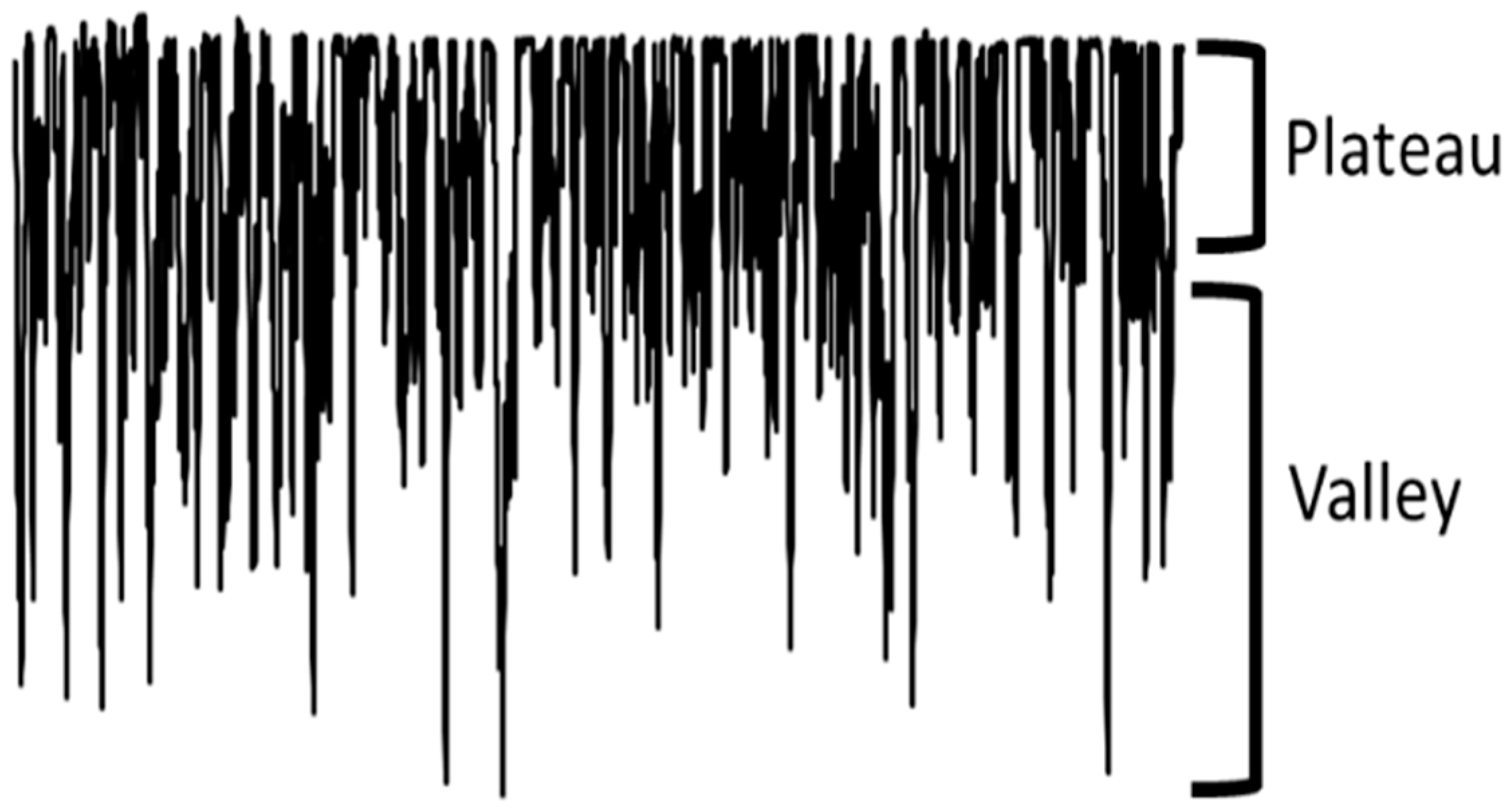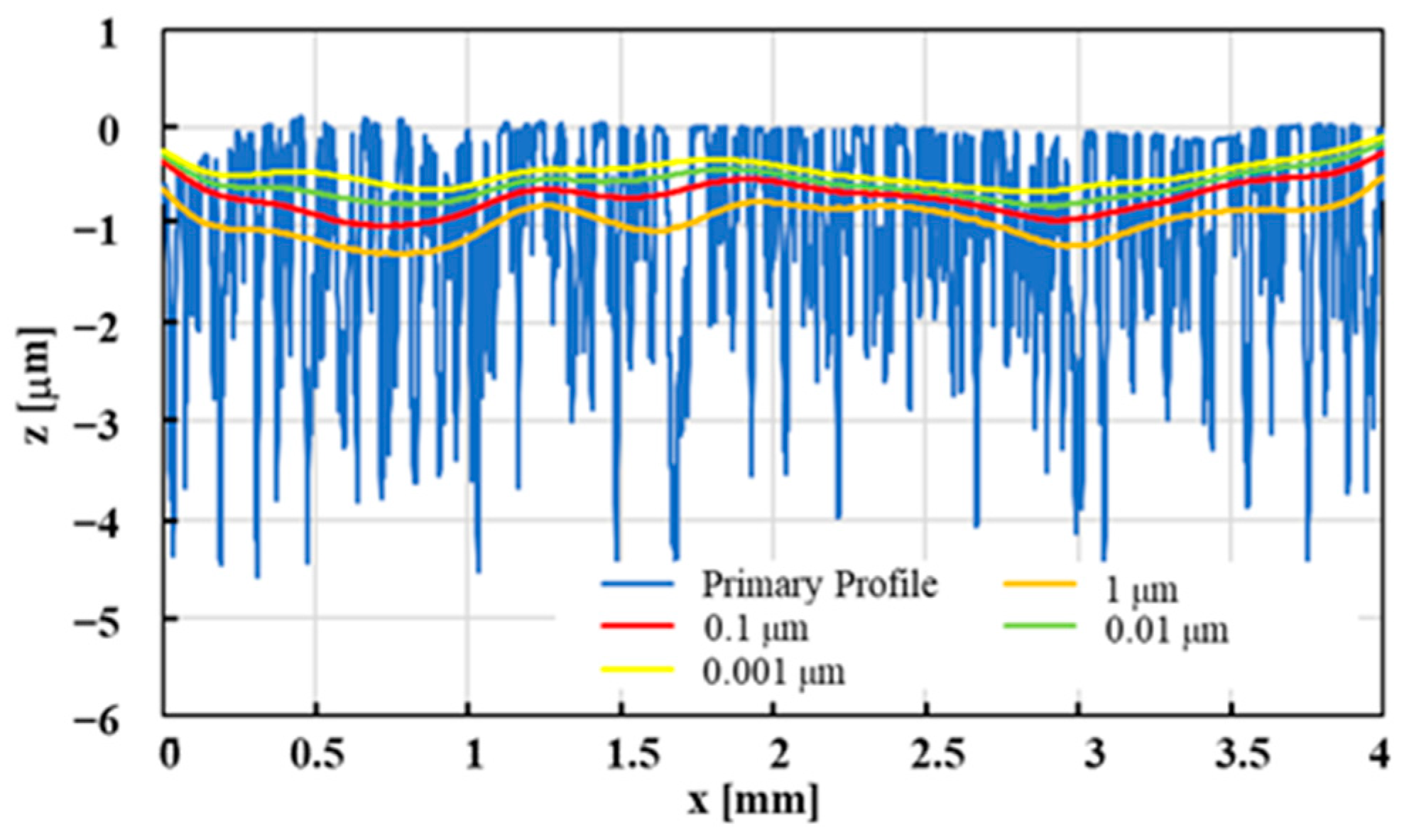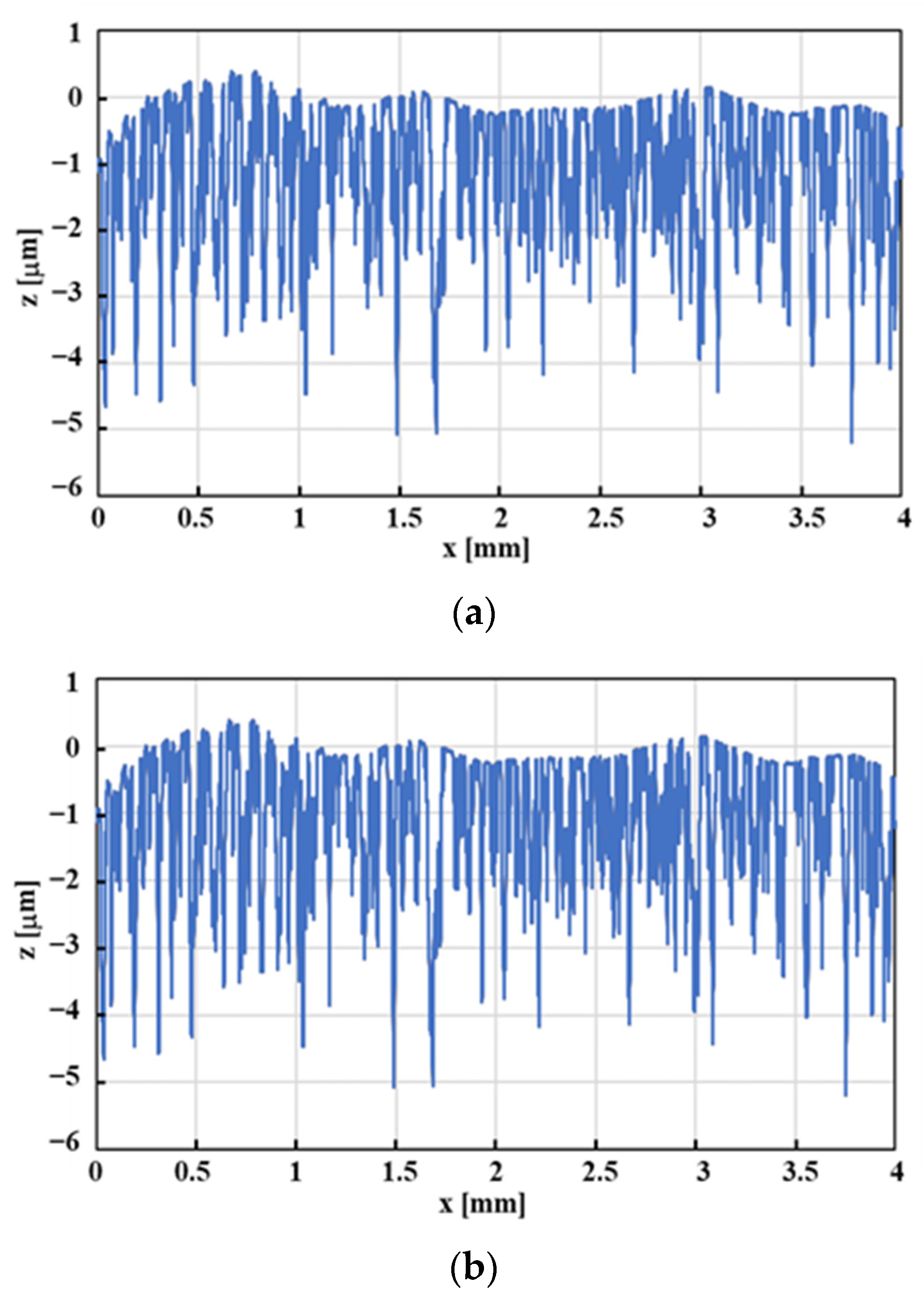Behavior of Gaussian Profile Filters for Plateau Surface Structure, and Optimum Parameters †
Abstract
1. Introduction
2. RGRF
3. Experiments and Results
4. Conclusions
Author Contributions
Funding
Conflicts of Interest
References
- ISO 21920-1:2021; Geometrical Product Specifications (GPS)-Surface Texture: Profile-Part 1: Indication of Surface Texture. ISO: Geneva, Switzerland, 2021.
- ISO 16610-31:2016; Geometrical Product Specifications (GPS)-Filtration-Part 31: Robust Profile Filters: Gaussian Regression Filters. ISO: Geneva, Switzerland, 2016.
- Seewig, J. Linear and robust Gaussian regression filters. J. Phys. Conf. Ser. 2005, 13, 254–257. [Google Scholar] [CrossRef]
- Corless, R.M.; Gonnet, G.H.; Hare, D.E.G.; Jeffrey, D.J.; Knuth, D.E. On the LambertW function. Adv. Comput. Math. 1996, 5, 329–359. [Google Scholar] [CrossRef]
- Brinkmann, S.; Bodschwinna, H.; Lemke, H.W. Accessing roughness in three-dimensions using Gaussian regression filtering. Int. J. Mach. Tools Manuf. 2001, 41, 2153–2161. [Google Scholar] [CrossRef]
- Kondo, Y.; Numada, M.; Koshimizu, H. A transmission characteristic of the robust Gaussian filter by using fast M-estimation method. J. Jpn. Soc. Precis. Eng. 2013, 79, 659–664. (In Japanese) [Google Scholar] [CrossRef]
- Kondo, Y.; Numada, M.; Koshimizu, H.; Yoshida, I. A study on four major characteristics of two-dimensional fast M-estimation based Gaussian filter (FMGF). J. Jpn. Soc. Precis. Eng. 2015, 81, 170–175. (In Japanese) [Google Scholar] [CrossRef]
- Kondo, Y.; Numada, M.; Nakayama, D.; Yoshida, I. Verification of Characteristics of Gaussian Filter Series for Surface Roughness in ISO and Proposal of Filter Selection Guidelines. Nanomanuf. Metrol. 2021, 4, 97–108. [Google Scholar] [CrossRef]
- ISO 16610-30:2015; Geometrical Product Specifications (GPS)-Filtration-Part 30: Robust Profile Filters: Basic Concepts. ISO: Geneva, Switzerland, 2015.
- ISO 16610-21:2011; Geometrical Product Specifications (GPS)-Filtration-Part 21: Linear Profile Filters: Gaussian Filters (JIS B 0634: 2017). ISO: Geneva, Switzerland, 2011.





Disclaimer/Publisher’s Note: The statements, opinions and data contained in all publications are solely those of the individual author(s) and contributor(s) and not of MDPI and/or the editor(s). MDPI and/or the editor(s) disclaim responsibility for any injury to people or property resulting from any ideas, methods, instructions or products referred to in the content. |
© 2022 by the authors. Licensee MDPI, Basel, Switzerland. This article is an open access article distributed under the terms and conditions of the Creative Commons Attribution (CC BY) license (https://creativecommons.org/licenses/by/4.0/).
Share and Cite
Saito, R.; Yoshida, I. Behavior of Gaussian Profile Filters for Plateau Surface Structure, and Optimum Parameters. Eng. Proc. 2023, 31, 58. https://doi.org/10.3390/ASEC2022-13793
Saito R, Yoshida I. Behavior of Gaussian Profile Filters for Plateau Surface Structure, and Optimum Parameters. Engineering Proceedings. 2023; 31(1):58. https://doi.org/10.3390/ASEC2022-13793
Chicago/Turabian StyleSaito, Ryo, and Ichiro Yoshida. 2023. "Behavior of Gaussian Profile Filters for Plateau Surface Structure, and Optimum Parameters" Engineering Proceedings 31, no. 1: 58. https://doi.org/10.3390/ASEC2022-13793
APA StyleSaito, R., & Yoshida, I. (2023). Behavior of Gaussian Profile Filters for Plateau Surface Structure, and Optimum Parameters. Engineering Proceedings, 31(1), 58. https://doi.org/10.3390/ASEC2022-13793





